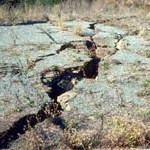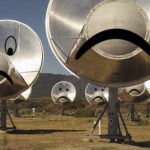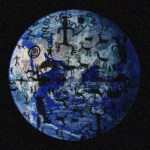SETI
By Dr. Friedemann Freund; Carl Sagan Center for the Study of Life in the Universe, SETI Institute, and Gail Jacobs
Friedemann Freund doesn't shrink from taking on the really big problems. His research has elucidated such important phenomena as the fact that rocks under stress behave like batteries that can produce currents deep within the crust of the Earth. These are not piddling electron flows, either - the currents could be as large as millions of amperes, sufficient to be measured above ground, and perhaps even from orbit. Understanding and exploiting this phenomenon could lead to a…
As you may have heard, SETI is in trouble.
Funding cutbacks on a state and federal level have forced the Allen Telescope Array -- SETI's new homebase, actually just a part of the U.C. Berkeley's Hat Creek Radio Observatory (HCRO) -- into indefinite hibernation. With U.C. Berkeley losing ninety percent of its NSF University Radio Observatory money this year, and the growing California budget shortfalls, the hunt for extraterrestrial life has simply, and pragmatically, fallen by the wayside.
This financial deficit particularly smarts because the Allen Telescope Array was just about to…
Let's define alien.
Definition number one: unfamiliar. By that description alone, a good 99% of life on this planet is alien. Breathing water, living nestled in thermal vents, stalking prey on the veldt, growing out of the Earth and eating sunlight, without eyes, without legs, with extra legs, color-blind, carapaced, marsupial, with exoskeletons, with jelly for brains, microbial, in a test tube, growing from spores. Not to mention the extremophiles, those nutty organisms that thrive in hellish environments like boiling acid, liquid asphalt, radioactive waste, and under extreme pressure.
I'…
Update: The broadcast went really well. Thanks to everyone for participating. You can check out the replay and transcript with Jill Tarter and Seth Shostak here â Stay tuned for more interactive broadcasts to come. We've got some dingers lined up...
Join us tomorrow for a special interactive broadcast of The Search for Life in the Universe, originally taped during the 2010 World Science Festival. Accompanying the broadcast, we're very excited to have live commentary and a Q/A session with the SETI Institute's Jill Tarter and Seth Shostak.
Are we alone? It’s a question that has obsessed us…
Greetings from the People of Earth from World Science Festival on Vimeo.
I made the above video, Greetings from the People of Earth, to open the World Science Festival 2010 panel "The Search for Life in the Universe," which featured personal hero Jill Tarter, David Charbonneau, and Steven Squyres.
In 1977, taking advantage of a fortuitous alignment of planets, NASA dispatched two spacecraft named Voyager into space. These probes, now the farthest human-made objects from Earth, carry with them a unique recording, the Voyager Golden Record. Compiled by a team under Dr. Carl Sagan, the Golden…
The above video montage was kindly produced by multimedia artist and musician Claire L. Evans (of Universe) to open the WSF 2010 panel "The Search for Life in the Universe," which featured the likes of Jill Tarter, David Charbonneau, and Steven Squyres. Unfortunately, due to a production clusterWTF, it didn't end up running. Which is a shame, because I really like its somewhat chilling but still hopeful subtleties. Claire breaks down her motivations for putting together the piece:
In 1977, taking advantage of a fortuitous alignment of planets, NASA dispatched two spacecraft named Voyager into…
Based on some of the (many) comments spurred by the appearance of PepsiCo on ScienceBlogs, we want to clarify Brookhaven's involvement on this site.
In April, Brookhaven was invited by ScienceBlogs editors to join the community as an institutional blogger, along with the Weizmann Institute of Science and the SETI Institute (and later, CERN and the Howard Hughes Medical Institute).
There's no money being exchanged between Brookhaven and ScienceBlogs.
Of course, we see this as a good public relations opportunity. But that doesn't mean that this space will only be used to redistribute press…
Astrobiology is an amazingly interesting, highly interdisciplinary, and relative new field of science. Basically, it's both the search for life elsewhere in the universe, and it's the study of how to sustain human life in space and on other planets (and how to protect other planets from Earth life). Our lab works on several different astrobiological projects. Given both the amazing breadth of science that falls under the heading of "astrobiology," and the fact that it is a branch of "space exploration", some of the titles of talks and papers in this field can seem rather bizarre when seen…
I'm flying out to New York City on Sunday to participate in the very exciting BRAINWAVE series at the Rubin Museum of Art. BRAINWAVE, which is in its third year, brings thinkers from different disciplines to sit down with scientists to wrap their (and our) minds around the things that matter. Past pairings include Composer Philip Glass and astronomer Greg Laughlin, screenwriter Charlie Kaufman and physicist Brian Greene, and performance artist Laurie Anderson with astrophysicist Janna Levin. Needless to say, it's a fascinating series, and I'm honored to be involved.
I'll be talking with…



